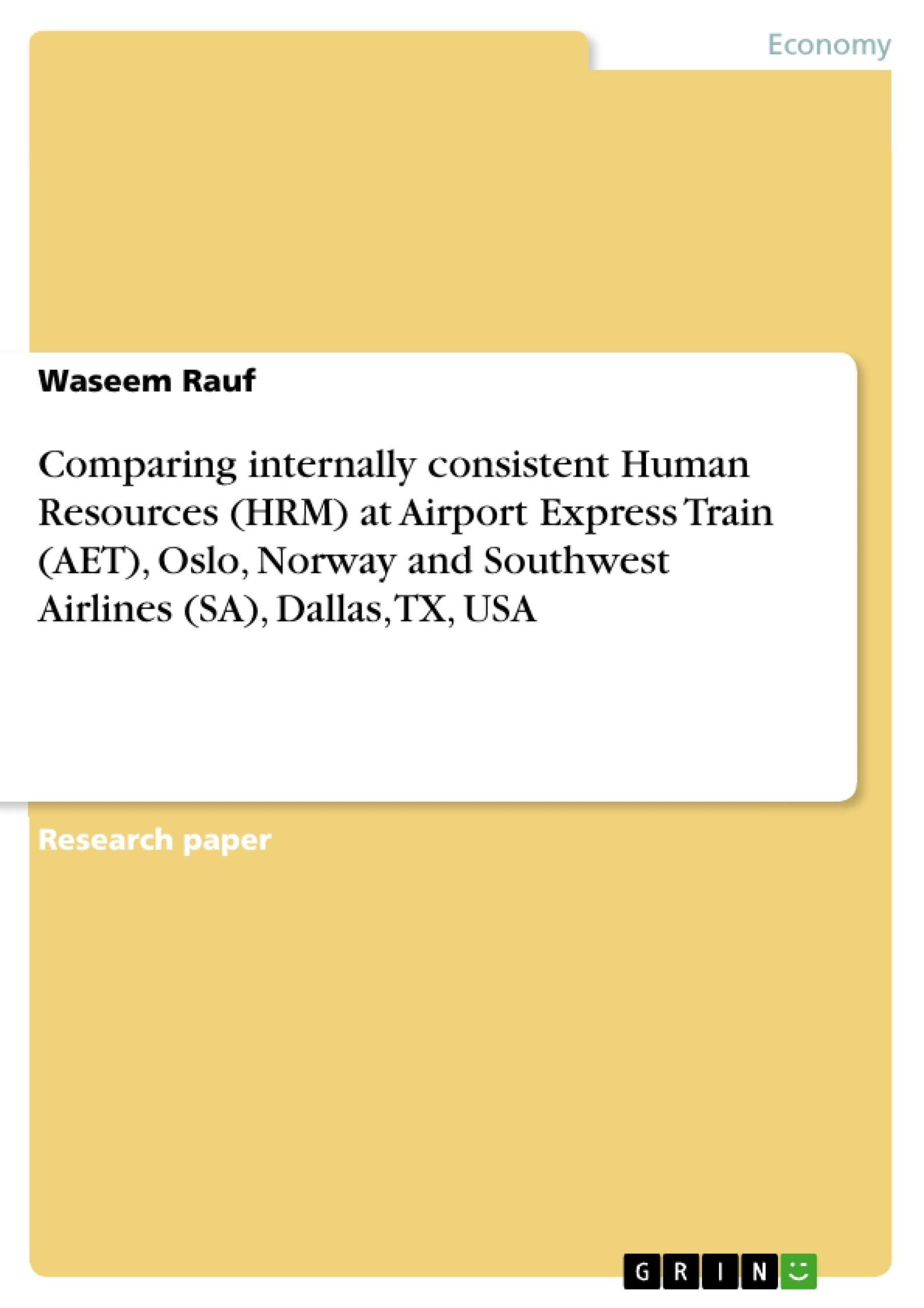In today’s competitive world of business, its very crucial and necessary to maintain the employees within the organisation and make sure that they are committed to work. This is very important because retaining employees within organisations has become frightening for many organisations.
This report has focused on 2 different companies namely Southwest Airlines (SA) and Airport Express Train (AET) where both the companies are operating in the travel sector. SA is an airline company based in USA whereas AET is an express train operating between Airport and Oslo, Norway. Both the companies were very different with regards to the size, age, ownership, competitive strategy, national context and labour laws. But eventually both the company achieved their competitive strategy and succeed through the application of High Performance Work System (HPWS).
The report was concluded where a critical analysis of the companies was carried out in relation to theories. SA and AET both were successful in their businesses throughout their past, but there needs to be some recommendation made in order for them to grow themselves and improve on flaws. Finally, recommendation on how to achieve the competitive advantage through employees were suggested to continue their success in the future.
Table of Contents
- Executive Summary
- Introduction
- Analysis
- Comparison of similarities and dissimilarities between SA and AET with respect to HR issues.
- Internal Consistency in HR between SA and AET.
- Conclusion
- Recommendation
- References
Objectives and Key Themes
This report examines the case study "Comparing internally consistent Human Resources (HRM) at Airport Express Train, Oslo, Norway and Southwest Airlines, Dallas, TX, USA" by Kuvaas and Dysvik (2012). It analyzes how two companies have successfully applied the High Performance Work System (HPWS) theory to manage their employees. The report identifies similarities and differences between SA and AET in terms of HR issues such as company size, age, ownership, competitive strategy, national context, and labor laws. It also discusses the internal consistency of human resource management in these companies.
- The application of High Performance Work System (HPWS) theory in managing employees.
- Comparison of similarities and dissimilarities between SA and AET in terms of HR issues.
- Analysis of the internal consistency of human resource management in SA and AET.
- Assessment of the success of both companies in achieving their competitive advantage through HPWS.
- Identification of key characteristics of HPWS and their impact on organizational performance.
Chapter Summaries
The introduction provides an overview of the report's objectives and scope. It introduces the case study by Kuvaas and Dysvik (2012) and highlights the successful application of HPWS by both companies.
The analysis chapter compares and contrasts SA and AET with respect to key HR issues. It examines the similarities and differences between the companies in terms of size, age, ownership, competitive strategy, national context, and labor laws. The chapter explores how both companies have achieved their competitive advantage through the implementation of HPWS.
Keywords
The key terms and concepts explored in this report include: High Performance Work System (HPWS), human resource management (HRM), internal consistency, competitive advantage, organizational performance, Southwest Airlines (SA), Airport Express Train (AET), job security, national context, and labor laws. The report focuses on the successful application of HPWS in both companies and its impact on their HR practices and overall success.
- Quote paper
- Waseem Rauf (Author), 2016, Comparing internally consistent Human Resources (HRM) at Airport Express Train (AET), Oslo, Norway and Southwest Airlines (SA), Dallas, TX, USA, Munich, GRIN Verlag, https://www.grin.com/document/335112




